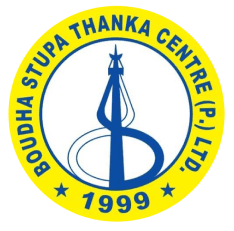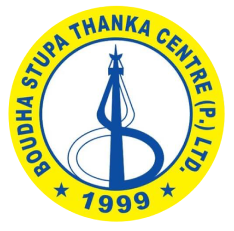Kalachakra thangka painting is the traditional representation of Kalachakra, a tantric deity in Tibetan Buddhism. The name Kalachakra means "Wheel of Time," and the deity represents the ultimate reality of the universe and the nature of the mind.
The Kalachakra tantra is considered one of the most advanced and profound teachings of Vajrayana Buddhism, and it is said to reveal the secrets of the universe and the ultimate nature of reality.
The Kalachakra deity is typically depicted as a blue-skinned man with two faces and four arms. He sits in a relaxed posture on a throne or lotus seat. The right face represents the peaceful aspect of the deity, while the left face represents the wrathful aspect. The right-hand holds a vajra, a ritual object symbolizing indestructibility, and the left hand holds a bell. The upper right-hand holds a wheel, which symbolizes the "Wheel of Time" and the upper left hand holds a sword, which symbolizes the cutting of ignorance.
Kalachakra is considered a powerful and fierce deity, associated with the attainment of the highest tantra, the Anuttarayoga tantra in Buddhism. His practice is said to be highly secret and only initiated into those deemed ready by their teachers. The Kalachakra practice is said to be a powerful way to achieve spiritual advancement and attain enlightenment and to attain the ultimate level of awareness.
The Kalchakra deity thangka painting is a meditational aid for the tantric practice.
The Kalachakra tantra is also considered key teaching in Tibetan Buddhism. The Kalachakra practice is said to be highly effective in removing obstacles, pacifying conflicts, and destroying negative influences. Kalchakra mantra, "Om Kalachakra Hum," is also a popular one to recite for protection and to invoke the power of the Buddha.











































